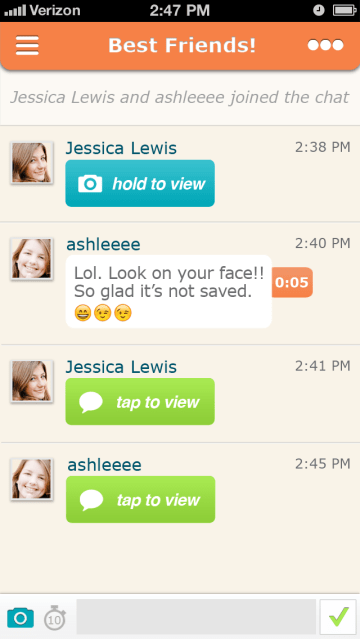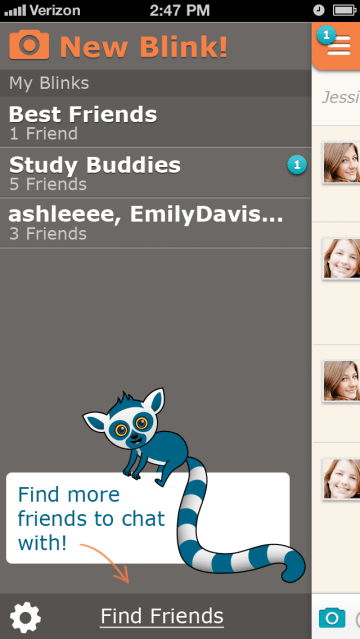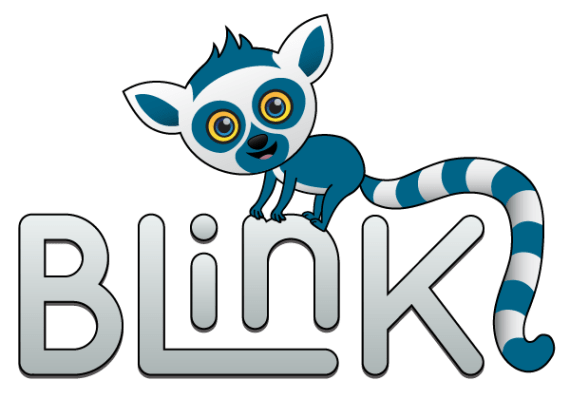Blink, a new mobile application for ephemeral messaging, is debuting today on the Apple App Store allowing users to text, plus share photos, and soon videos, with other friends as well as with groups. The app represents a spin-off from the same technology which also powers social friend finder, Kismet. Though the company says it has no plans to shut down Kismet at this time, its current focus will be on continuing the development of Blink at present.
You may remember Kismet, founded by ex-Googler Kevin Stephens and Michelle Norgan, as one of the apps which surged in popularity around the time of SXSW 2012, when “ambient location” seemed to be the latest trend. As it turned out, while Kismet saw some pick up on college campuses, and particularly in the Greek community, its user base remained under a million.
 Now Blink is repurposing the company’s technology platform to attack mobile social networking from a new angle: disposable messaging.
Now Blink is repurposing the company’s technology platform to attack mobile social networking from a new angle: disposable messaging.
The mobile messaging market is huge, fragmented, and growing, but competitors focused on ephemeral messaging are still few. The most notable entrants at present are Snapchat and Facebook’s Poke, the former which is primarily focused on sharing photos and video, and the latter which has so far failed to find significant traction.
Unlike Snapchat, which leads this narrower niche, Blink allows users to send both text and photos, and supports messaging to groups, which actually makes it more like Poke.
“Our main goal is to bring real world conversations online,” explains Stephens of the new application. “The things we say in person are not written in ink, but the Internet is. We want to bring that to a mobile medium,” he adds.
Stephens also notes that the youngest mobile demographic – teenagers – seem to be exhibiting more concerns over privacy. As a group that has grown up in a world where the web has always existed, where everyone uses Facebook, and are now adopting smartphones in large numbers (a recent report found that 48 percent of mobile teens own an iPhone today, for instance), it’s no wonder that they’ve been drawn to tools where their passing thoughts aren’t forever etched in stone.
 And though he didn’t explicitly say so, that group may be somewhat distrustful of allowing Facebook to be the steward for their most private messages, given that company’s vision and push for more openness, as opposed to less.
And though he didn’t explicitly say so, that group may be somewhat distrustful of allowing Facebook to be the steward for their most private messages, given that company’s vision and push for more openness, as opposed to less.
Ephemeral messaging is not always about doing something inappropriate, Stephens points out. “The main use case is anything where you want to be honest and spontaneous, and not worried ‘what if someone reads this in two years?”” he says.
In Blink, like Snapchat and Poke, messages can be set to expire after a certain amount of time: 1 to 10 seconds for photos, and 10 seconds to 5 minutes for texts. Users can also choose to make messages permanent, if they want, which would allow them to use Blink in similar ways to existing messaging apps, like WhatsApp, MessageMe, Kik, Path, Tango, Viber, LINE, and all the rest.
At launch, the app supports photos and text, as noted above, but in a few weeks time, video support will be added, as well as other unique features like audio notes (a push-to-talk like functionality), support for sketches and doodles, and stickers.
“We’re going to continue with the Internet’s belief that everything should be monetized with stickers from now on,” Stephens jokes. (He actually has other plans for revenue generation, but doesn’t want to pre-announce what are still just ideas.)
Given Snapchat’s large $13.5 million Series A from earlier this year, it has the room to grow and then address any hole Blink may think it has found to fill. But Stephens isn’t concerned, saying there’s “enough room in the sandbox” for more than one player, given the huge worldwide market for messaging today. “It’s the main application people use on their phones – even more than voice at this point,” he says.
Blink is launching worldwide today on iOS, but the Android version is in active development. Longer term, the team is keen to explore the potential use cases around wearable tech, too, like Google Glass.
Through its earlier efforts with Kismet, the company has $1 million in seed funding, and is backed by Triple Point, NEA, AngelPad, and angels including Shiva Rajaraman, Steph Hannon, Roham Gharegozlou, Ben Narasin, and others.
Blink is available for download here.
